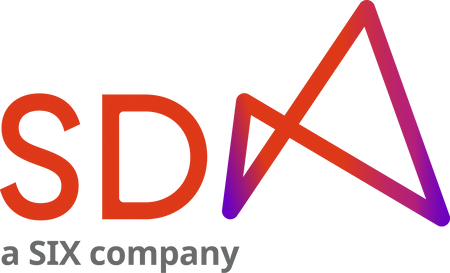Paolo discusses the growth of custodians targeting institutional clients, the impact of regulatory regimes on the crypto custody market, and the challenges facing service providers in meeting the needs of institutional investors. Furthermore, he highlights the benefits of using a provider such as SDX Web3 services.
Hi Paolo! How do you see the crypto custody market evolving in the next 5-10 years, and how will this impact institutional investment in cryptocurrencies?
There is definitely an apparent growth in the numbers of custody tech providers and custodians specifically targeting institutional clients entering the market. We are seeing increasing demand from regulated institutional players, such as banks, wanting to offer access to cryptocurrency to their clients. These banks need to either build in-house custody capabilities or onboard custodians in order to develop comprehensive service offerings for their own clients. We’re also seeing the development, concurrently, of the regulatory regimes that are going to impact crypto custody significantly over the next 5-10 years. Of course, the most obvious is the European Union’s introduction of MiCA, we also foresee many other jurisdictions introducing regimes and frameworks that bring crypto custodians into the regulatory fold. All of these are likely to require crypto custodians to demonstrate that their business processes and infrastructure are implemented in such a way that custody of the client assets is safe and secure and that adequate and robust controls are put in place to avoid loss of funds. Additionally, following the well-publicized circumstances surrounding the collapse of FTX, many players in the market have developed a more sophisticated understanding of the risk associated with having their assets custodied by a trading venue. This creates a commercial push towards a future in which custody may increasingly be handled by market participants other than the exchange or the brokers providing execution capabilities. So, in summary, I think we’ll start to see a decoupling of these tightly integrated vertical models that are currently so common across crypto markets as the market matures.
What advice would you give to institutions considering using a crypto custody service for the first time?
Crypto custody requires a lot of effort and resources from institutions if they want to build out the capability themselves, not only in terms of cost but also in bringing in and building up knowledge and other internal resources. Implementing digital asset custody involves not only onboarding a technology provider but also building processes around it, plus putting in place the operations team and compliance team capabilities to handle crypto transactions. It also involves having in place the appropriate insurances in case of loss of funds and being able to evidence regular audits and certifications. So, it’s really important that institutions, when approaching this topic for the first time, look at the entire effort needed to build such a capability.
What are the main challenges facing crypto custody service providers in meeting the needs of institutional investors?
The requirements that institutional clients have for their crypto custody service providers are very different from those of crypto-native firms or retail-focused custody solutions. There are many additional requirements in terms of compliance checks, travel rules and best practices around key generation and verification processes. Even many of the more established crypto custody providers are faced with unfamiliar and highly specific requirements coming from the banking industry, and they struggle to meet these requirements. At SDX, we’re native to this industry, and we are very much aware of how we need to structure our services and products to meet our institutional clients’ demands – that’s our key differentiator in the crypto custody space.
What are the primary benefits of using a crypto custody provider, such as SDX Web3 services, for a financial institution?
SDX Web3 is part of SIX Group, and therefore we know precisely what is required to build institutional-grade infrastructure solutions for regulated financial institutions and banks. We have implemented several layers of defense to provide the highest level of protection for client assets. This includes a resilient business operational process around our digital custody, a dedicated layer of IT security, a robust risk management framework and regular audits. We operate our digital custody offering in a Swiss data center and to the highest standards expected from a provider of critical national infrastructure such as SIX Group. Our digital custody solution also enables easy integration with bank systems and has processes in place around compliance checks, so our clients can rely on us to take care of these aspects for them.
About SDX Web3
SDX Web3 is a leading crypto service and infrastructure provider for institutional clients who aim to scale their digital asset business. Founded in 2022 as part of SIX Group, one of Europe’s leading providers of financial market infrastructure, SDX Web3 adheres to the highest quality and security standards in providing institutional-grade infrastructure services. SDX Web3 allows banks and other institutions to concentrate on their core business by providing them with efficient access to public blockchain infrastructure.
SDX Web3 Institutional Custody provides secure storage and management of digital assets for institutional clients seeking exposure to blockchain-based assets. Safe and cost-effective, the service offers key storage, transfer execution, and monitoring with banking-grade compliance standards, automated reporting and blockchain management. With the highest quality of loss and theft prevention services, SDX Web3 ensures assets are always protected.

